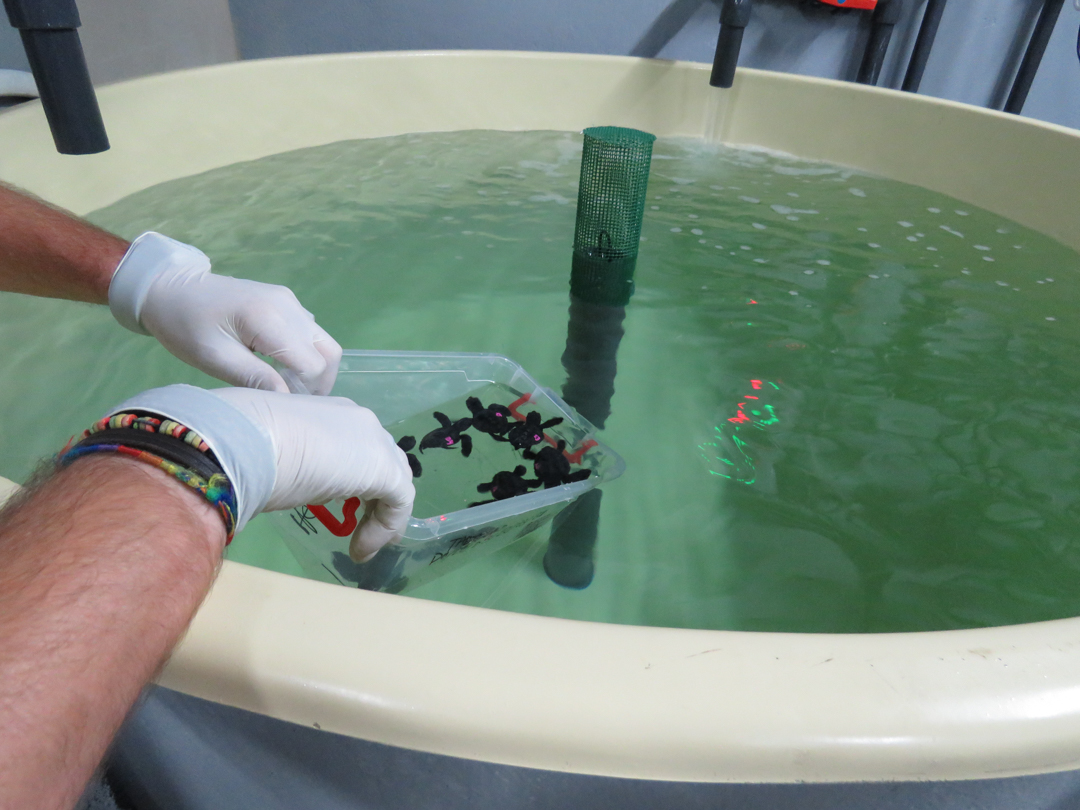In the beginning of August last year, something unusual was detected on the beach of Los Boliches in Fuengirola (Malaga), one of the highest urbanised and touristic beaches of the andalusian coast: a loggerhead female was nesting on the sand. After an exhaustive search, 72 eggs were found. This was the westernmost nest of loggerhead turtle registered in the Mediterranean and also the first record of nesting activity of this species within the Alboran Sea.
This marine turtle, whose scientific name is Caretta caretta, expands throughout sub-tropical and temperate waters worldwide. Although the Western Mediterranean is not recognised as a frequent nesting area for the species, sporadic nesting events have been registered in the last two decades, such as the one detected on the beach of Pulpí (Almería) in 2015. "These sporadic events have been related to changes in the climate patterns and the potential warming of the Mediterranean Western basis", explains Adolfo Marco Llorente, researcher at the Doñana Biological Station - CSIC.
As was done with the nest on the beach of Pulpí, the one identified on the beach of Los Boliches was relocated due to the proximity of the nest to the shoreline and the imminent risk of inundation, coupled with the difficulties to protect the nest in such a touristic place. The nest was split in two. Sixty eggs were relocated to the nearby beach of Calahonda in Marbella for incubation under natural conditions. The remaining twelve eggs were transferred to Bioparc facilities at Fuengirola city for incubation at controlled temperatures.
After 50 days of incubation, the first hatchs were detected from the clutch relocated to Calahonda: 49 out of 60 eggs hatched, overcoming the average success rate registered in the previous clutches laid in Spain. As for the eggs incubated in Bioparc, six of them were placed into an incubator set 30,5ºC and the other six eggs, into another one set 29,5ºC. Eleven eggs hatched and the newly born turtles ranged in size from 3,2 to 4,45 cm and weighed between 12,8 and 17 grams.
Head-starting program and releases
All hatchlings were transferred to the Center for Managment of Marine Environment Resources of Andalusia (CEGMA) for their inclusion in a head-starting program, aiming to boost their probability of survival, as well as to avoid the low sea Surface temperature during the Mediterranean fall and Winter.
In the beginning of August this year, 15 hatchlings have been released in Fuengirola and the others will be presumably released this September. Marine turtles have a strong philopatry behaviour, this is, they tend to return to the place where they hatched for breeding. However, what is being observed with the few adults nesting in Andalusia points to the opposite. "There were no nesting registration until very recently and it does not seem likely that these females that nest on the Spanish coasts have been born here", points Adolfo Marco. To study this behaviour, some of the hatchlings will be equipped with GPS devices for their tracking in the sea. "The warming of the Western Mediterranean is causing the opposite that philopatry produces. They are dispersant animals that may be reacting to an important climatic change, instead of responding to their site fidelity to the area where they were born", he adds.
Western Mediterranean: an increasingly frequent nesting point
This nesting sites within the Alboran Sea could be more frequent in the future if global warming continues. In fact, in the beginning of July this year, a new loggerhead nest was found on a beach in Carboneras (Almería). In this case, as it is a very remote and high-quality beach, the people who identified the nest decided to leave it in situ and monitor it using passive protection systems that have already been used in previous work with loggerhead turtles in Cape Verde. The Doñana Biological Station, for its part, is providing advice on nest care.
Reference
Daniel Gonzalez-Paredes, Carolina Fernández-Maldonado, Manuel Grondona, Rosa Martínez-Valverde, and Adolfo Marco. The westernmost nest of a loggerhead sea turtle, Caretta caretta (Linnaeus 1758), registered in the Mediterranean Basin (Testudines, Cheloniidae) Herpetology Notes, volume 14: 907-912 (2021). https://www.biotaxa.org/hn/article/view/65824
https://www.biotaxa.org/hn/article/view/65824









 ¡Abierta convocatoria para proyectos de investigación en la ICTS- Doñana!
¡Abierta convocatoria para proyectos de investigación en la ICTS- Doñana!


